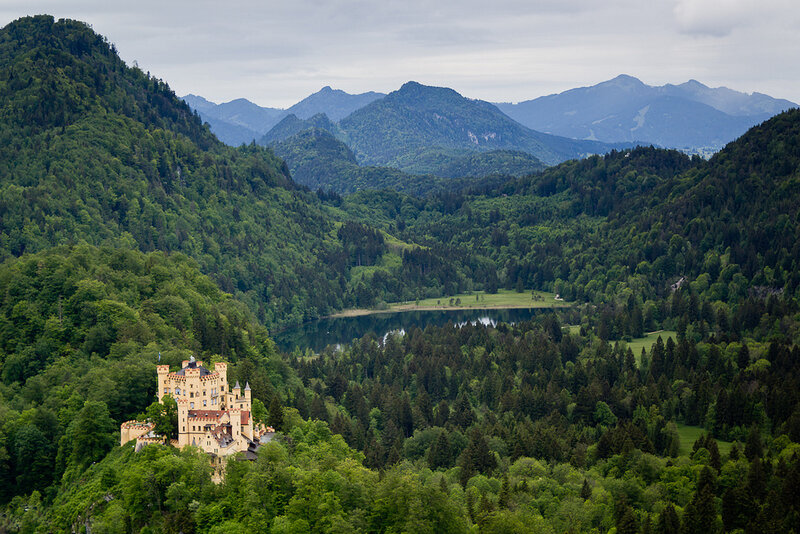

Hohenschwangau Castle is located near the town of Fussen, in Bavaria, on a wooded hill between two lakes: Alpsee and Schwansee.
Until the 17th century, there was the medieval Schwanstein fortress - the family estate of the family of the Knights of Schwangau. Then the castle was replaced by several more owners and gradually by the XIX century it left only ruins.
Hohenschwangau Castle - a neo-Gothic castle. The architect and decorator of the castle was Domenico Quaglio II (Johann Dominicus Quaglio) - one of the most famous German architects of the Romantic era, who put all his strength into the construction of this romantic castle and died before the construction was completed. The final interior decoration of the castle was led by Austrian artist Moritz von Schwind (Moritz Ludwig von Schwind).





Hohenschwangau became the official summer and hunting residence of Maximilian II, his wife Maria Prussia and his two sons - Ludwig, later (Ludwig II, of Bavaria) and Otto (later - Otto I of Bavaria). The king and queen lived in the main building, and the children lived in the outbuilding.
Queen Mary, niece of King of Prussia Friedrich Wilhelm III and granddaughter of King Frederick Wilhelm II, was crazy about Hohenschwangau. The Bavarian royal family spent a lot of time here. It hosted important guests, held various festivities, exciting knightly tournaments, fireworks and picnics.
The childhood of King Ludwig II passed in Hohenschwangau and the castle largely determined his whole life. In this castle, Ludwig first met Richard Wagner, there is a piano on which the famous composer played. The walls of some rooms are decorated with frescoes depicting episodes from German history and legends, including the swan knight from Wagner’s opera “Lohengrin”.
At first, Neuschwanstein was called New Hohenschwangau. Since castles are related not only by their close proximity, but also by the fact that it was in Hohenschwangau, where Ludwig was surrounded by paintings with heroes of legends from childhood, he madly fell in love with the world of German sagas. The courtyard decoration is a fountain in the form of a swan.


To our days, Hohenschwangau Castle has come in its original form and with its original decor.
An interesting impression is the combination of neo-Gothic architecture and interior decoration with Biedermeier style furnishings. This style, simple and without complex decorations, as an offshoot of romanticism, was common in Europe in the first half of the 19th century, and was the embodiment of burgher ideas about home comfort.













Ferdinand von Piloty (1828-1895). Ludwig II's coronation portrait, 1865
